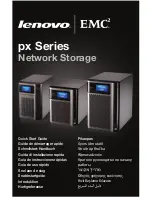
Chapter 6 Configuring the System
Changing IP Information
6-6
Catalyst 2900 Series XL and Catalyst 3500 Series XL Software Configuration Guide
78-6511-05
If the configuration parameters sent to the client in the DHCPOFFER unicast
message by the DHCP server are invalid (a configuration error exists), the client
returns a DHCPDECLINE broadcast message to the DHCP server.
The DHCP server sends the client a DHCPNAK denial broadcast message, which
means the offered configuration parameters have not been assigned, an error has
occurred during the negotiation of the parameters, or the client has been slow in
responding to the DHCPOFFER message (the DHCP server assigned the
parameters to another client) of the DHCP server.
A DHCP client might receive offers from multiple DHCP or BOOTP servers and
can accept any one of the offers; however, the client usually accepts the first offer
it receives. The offer from the DHCP server is not a guarantee that the IP address
will be allocated to the client; however, the server usually reserves the address
until the client has had a chance to formally request the address. If the switch
accepts replies from a BOOTP server and configures itself, the switch will
broadcast, instead of unicast, TFTP requests to obtain the switch configuration
file.
Configuring the DHCP Server
You should configure the DHCP servers with reserved leases that are bound to
each switch by the switch hardware address. If the DHCP server does not support
reserved leases, the switch can obtain different IP addresses and configuration
files at different boot instances. You should configure the DHCP server with the
following lease options:
•
IP address of the client (required)
•
Subnet mask of the client (required)
•
DNS server IP address (required)
•
Router IP address (default gateway address to be used by the switch)
(required)
•
TFTP server name (required)
•
Boot filename (the name of the configuration file that the client needs)
(recommended)
•
Host name (optional)
















































